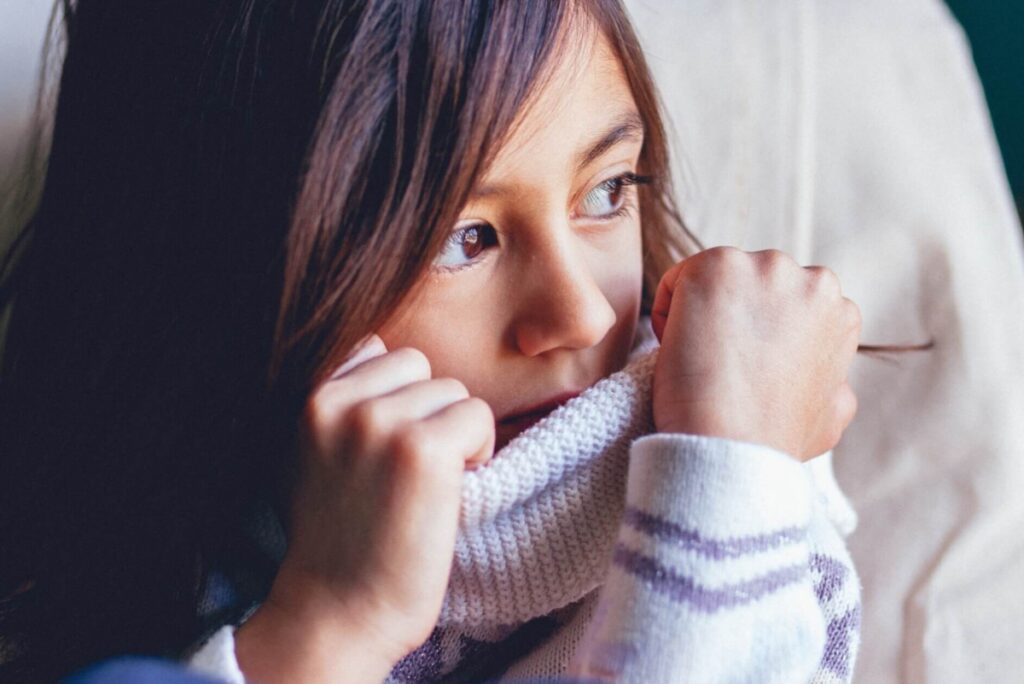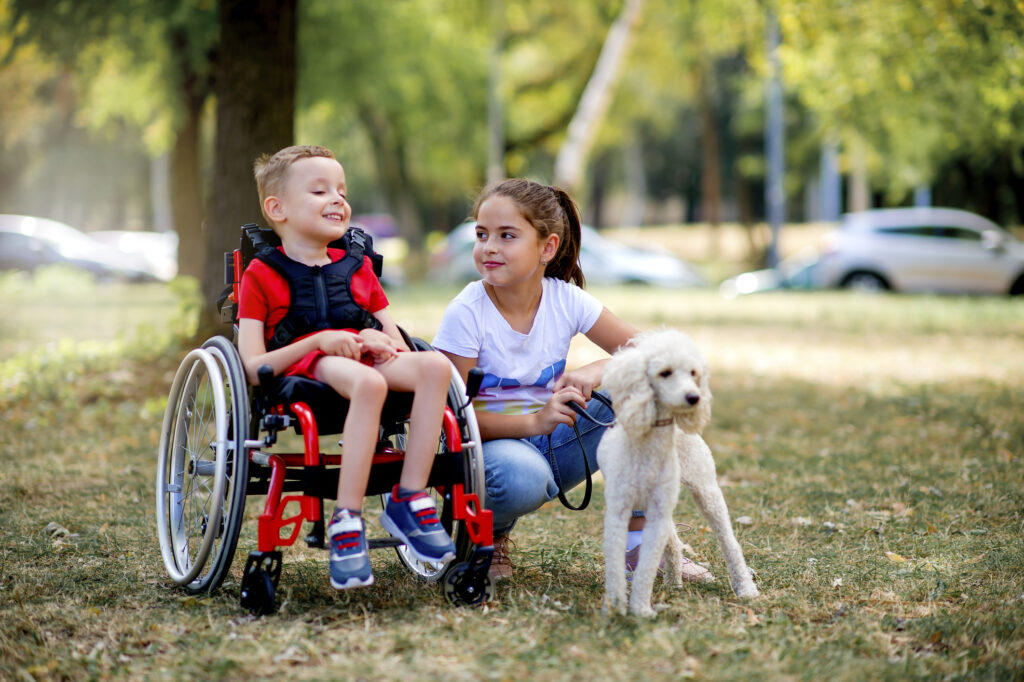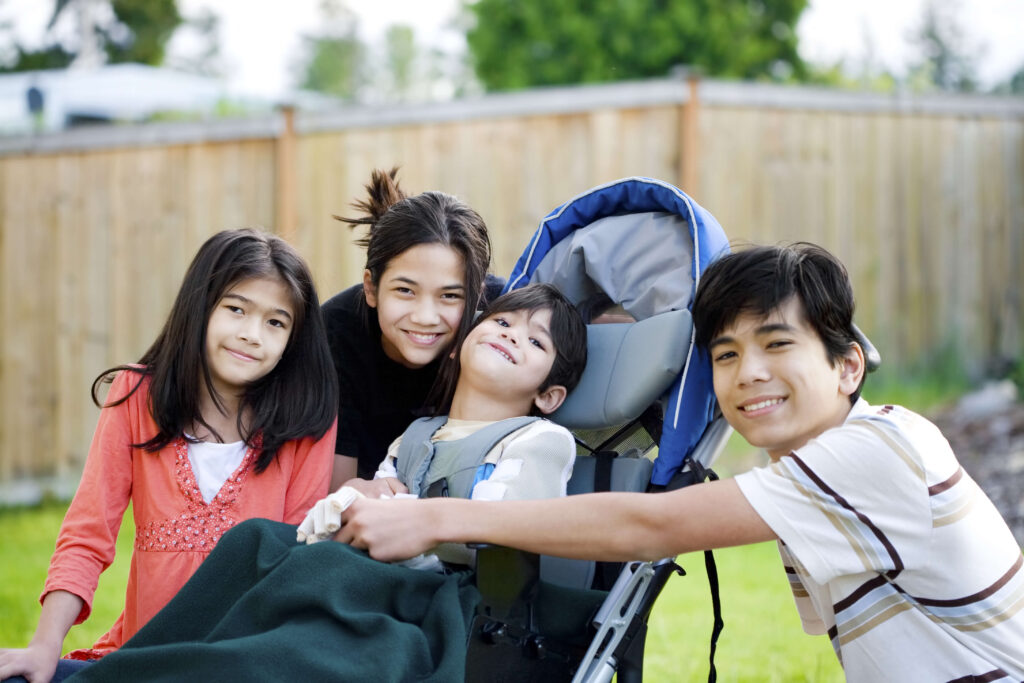The behavioral health needs of youth across the country have increased substantially over the past decade, particularly during the COVID-19 pandemic. Due to limited treatment options and provider shortages, those experiencing behavioral health crises are increasingly being placed in hospital emergency departments (EDs) or other high-acuity settings when de-escalation and stabilization in the home and community may be more appropriate.
In response to these challenges, states continue to build out their crisis continuum of care and consider innovative policy approaches to support children and adolescents. An emerging strategy includes the creation and implementation of facilities for crisis assessment, stabilization, and connection to services, as described in NASHP’s “Leading State Approaches to Youth Crisis Receiving and Stabilization Facilities.”
This case study explores New York’s efforts to adopt and expand crisis receiving and stabilization facilities and describes the structure, funding mechanisms, and services provided to support youth in community-based settings.
Youth Mental Health Needs and the Role of Crisis Facilities
Youth continue to experience heightened rates of mental health conditions. The portion of adolescents in New York who experienced a major depressive episode more than doubled from 2013 to 2021, rising from 8.8 to 20.3 percent.[1, 2] During the same period, the number of youth treated by the state’s Office of Mental Health for serious mental illness or emotional disturbances increased by 64 percent,[3] and the rate of high schoolers seriously considering suicide rose to 17 percent.[4]
Hospital EDs nationally are receiving many of these children in need, with mental health-related care becoming an increasingly large proportion of pediatric ED visits.[5, 6] In New York, the most recent data show that about two-thirds of all ED visits for self-harm were among youth ages 10–19.[7] While EDs have historically served as a first line of defense to treat pediatric behavioral health crises, they have been linked to lengthy waits for treatment, longer stays, and risk of readmission.[8] In 2021, patients in New York’s EDs waited an average of five and a half hours for mental health treatment.[9]
As states explore approaches to better address the needs of children and divert them from boarding in more restrictive settings, crisis receiving and stabilization facilities have emerged as an option that provides immediate assessment and care to de-escalate mental health crises and connect youth to follow-up services. These units generally allow for a short-term stay and include a limited number of beds, anywhere from six to 16.[10] Crisis stabilization centers are becoming a key component of New York’s crisis continuum and statewide integrated crisis response system, offering a treatment option between hospitalization and home- and community-based services.[11]
Youth Crisis Receiving and Stabilization Facilities
New York’s Crisis Stabilization Centers
A local model for crisis response served as a catalyst for New York’s adoption of crisis receiving and stabilization facilities statewide. In 2017, the Dutchess County Department of Behavioral and Community Health opened a stabilization center, the first of its kind in the state.[12] The facility is financed by the county, with some state support, and operated in partnership with the local hospital, recovery centers, and People USA, a peer-led mental health nonprofit.[13] After opening the center, Dutchess County reported significantly lower ED admissions and a 40 percent reduction in the county’s incarcerated population.[14]
Citing this local success and cost savings, New York began to focus on expanding crisis receiving and stabilization facilities statewide.[15] In 2021, New York enacted legislation to establish operating standards and a licensing model for Crisis Stabilization Centers (CSCs) under Article 36 of the state Mental Hygiene Law.[16] The state Office of Mental Health and Office of Addiction Services and Supports then published regulations related to CSCs in Part 600, Title 14, of the Code of Rules and Regulations in March 2022.[17] This was accompanied by detailed guidance around CSCs that outlines services, standards, and expectations for facilities across the state.
New York is currently in the process of establishing an initial 21 CSCs across the state, with funds provided to support start-up costs and ongoing implementation efforts.[18, 19] Facilities will be operated by providers at the community and local level but must comply with state regulations and oversight.[20]
Services, Staffing, and Structure
New York’s CSCs provide 24/7 on-site treatment and referral for individuals of all ages who are exhibiting symptoms of a mental health or substance use crisis, regardless of their ability to pay.[21] Services offered include triage and screening, assessment, therapeutic services, peer support, and referral for follow-up behavioral health services or social needs (e.g., food, housing, social services).[22] Individuals may receive care for a maximum of 24 hours.[23]
Facilities are staffed by multidisciplinary teams, which include a registered nurse, psychiatrist or psychiatric nurse practitioner, licensed substance abuse counselor, and certified peer specialist. Additional staff may include social workers, psychologists, mental health aides and counselors, therapists, and more. At a minimum, the registered nurse must be on-site at all times.[24]
Types of CSCs in New York
New York classifies CSCs in two types: Supportive Crisis Stabilization Centers (SCSCs) and Intensive Crisis Stabilization Centers (ICSCs). SCSCs provide care for those who are not at immediate risk of harming themselves or others, while ICSCs can treat individuals experiencing more severe symptoms. The following requirements apply specifically to ICSCs:
- Services available must include a psychiatric diagnostic evaluation and plan, psychosocial assessment, medication therapy, medication management, medication-assisted treatment, and detoxification services.[25]
- A psychiatrist or psychiatric nurse practitioner, a licensed substance abuse counselor, and a certified peer specialist must each be available or on-call 24/7.[26]
Considerations for Youth within CSCs
While designed for individuals of all ages, CSCs have specific services and options to address the needs of youth experiencing behavioral health crises.[27] New York requires that CSCs create a separate space for youth and families[28] and that at least one on-duty staff member has experience and training in treating and engaging youth.[29] Families are then served by the qualified provider, with a focus on effective engagement and shared decision-making using a family-centered approach. In addition, CSCs build collaborative relationships with community organizations and systems that provide core child services. Centers partner with schools, providers, and local organizations to identify and connect youth in crisis with behavioral health supports in the community.[30]
Youth- and family-specific peer supports are another key component of CSCs. Peers connect with individuals throughout their stay. They provide a range of supports that include advocacy, empowerment, prevention, recovery services, and discharge and referral connections.[31] For children and adolescents, peer specialists, such as credentialed family peer advocates and credentialed youth peer advocates[32], offer an additional array of services, including transition support, family empowerment, self-advocacy, and parent skill development.
After youth receive services from CSCs, New York offers a range of opportunities for ongoing de-escalation and treatment of behavioral health conditions. The state’s Children’s Crisis Residence Program is one such step-down option in the crisis continuum of care for youth. When children present to emergency services, such as EDs and CSCs, they may be referred and transferred to Children’s Crisis Residences for stabilization in a home-like community environment.[33] These residences are designed to provide short-term (typically up to 21 days) services for youth, including family supports, counseling, and care coordination.[34] Services provided by Children’s Crisis Residences are authorized under New York’s Medicaid State Plan, ensuring access for Medicaid-enrolled families.[35] The program has shown potential in reducing the need for more intensive care, and in 2022, 85 percent of youth admitted with depression exhibited less severe symptoms upon discharge.[36]
Funding Mechanisms and Progress
New York’s efforts to expand and establish CSCs statewide have been funded through the Coronavirus Response and Relief Supplemental Appropriations Act, the American Rescue Plan Act, and the Community Mental Health Services Block Grant program administered by the Substance Abuse and Mental Health Services Administration.[37] Following release of the Office of Mental Health’s guidance on CSCs in May 2022, Governor Kathy Hochul announced that $71 million would be awarded to develop 12 new supportive centers[38] and $75 million would go toward nine new intensive centers.[39]
In distributing funds, New York opted to issue requests for proposals (RFPs) for local- and community-level providers to develop and operate SCSCs and ICSCs. Awardees will receive funding for start-up costs and ongoing net deficit support, in addition to their expected revenue from billing Medicaid.[40] The RFPs specify which geographic regions will have awards for CSCs, ensuring a more even and equitable distribution of facilities across the state. Initial awards have been made, and facilities are currently being established.[41, 42]
Beyond the New York Model
New York continues to expand crisis receiving and stabilization facilities to enhance access to services for those experiencing behavioral health crises, with particular considerations for youth. As states address the ongoing challenge of children boarding in high-acuity, restrictive settings for behavioral health conditions, New York’s approach may provide a model for creating crisis centers that facilitate access to care in home- and community-based settings for youth. For another innovative state approach, please read NASHP’s companion case study, “Supporting Youth Mental Health through Crisis Stabilization Facilities: Wisconsin Case Study.”
[1] National Survey on Drug Use and Health. “2012-2013 NSDUH State Prevalence Estimates,” U.S. Department of Health and Human Services, Substance Abuse and Mental Health Services Administration, Center for Behavioral Health Statistics and Quality, December 16, 2014. https://www.samhsa.gov/data/report/2012-2013-nsduh-state-prevalence-estimates-excel-and-csv-tables-outcome.
[2] National Survey on Drug Use and Health. “2021 NSDUH: Model-Based Estimated Prevalence For States,” U.S. Department of Health and Human Services, Substance Abuse and Mental Health Services Administration, Center for Behavioral Health Statistics and Quality, March 8, 2023. https://www.samhsa.gov/data/report/2021-nsduh-state-prevalence-estimates.
[3] “New York State Office of Mental Health Patient Characteristics Survey, Trends in Clinical and Functioning Characteristics,” New York State Office of Mental Health. https://omh.ny.gov/omhweb/tableau/pcs.html.
[4] 1991-2021 High School Youth Risk Behavior Survey Data. U.S. Department of Health and Human Services, Centers for Disease Control and Prevention. https://yrbs-explorer.services.cdc.gov/#/graphs?questionCode=H26&topicCode=C01&location=NY&year=2021.
[5] Bommersbach, Tanner J., Alastair J. McKean, Mark Olfson, and Taeho Greg Rhee. “National Trends in Mental Health–Related Emergency Department Visits Among Youth, 2011-2020,” JAMA 329, no. 17 (May 2, 2023): 1469–77. https://doi.org/10.1001/jama.2023.4809.
[6] Leeb, Rebecca T., Rebecca H. Bitsko, Lakshmi Radhakrishnan, Pedro Martinez, Rashid Njai, and Kristin M. Holland. “Mental Health–Related Emergency Department Visits Among Children Aged <18 Years During the COVID-19 Pandemic — United States, January 1–October 17, 2020,” MMWR Morb Mortal Wkly Rep 2020 69 (November 13, 2020): 1675–80. http://dx.doi.org/10.15585/mmwr.mm6945a3.
[7] “NYS Health Connector – Suicides in New York State,” New York State Department of Health (NYSDOH) Bureau of Health Care Analytics, Vital Statistics Program, and New York State Department of Health Bureau of Occupational Health & Injury Prevention. https://nyshc.health.ny.gov/suicides-in-new-york.
[8] Hoover, Sharon, and Jeff Bostic. “Improving the Child and Adolescent Crisis System: Shifting from a 9-1-1 to a 9-8-8 Paradigm,” National Association of State Mental Health Program Directors, August 2020. https://www.nasmhpd.org/sites/default/files/2020paper9.pdf.
[9] Robinson, David. “Families in Mental Health Crisis Feel Abandoned by NY’s Care System. Can It Be Fixed?,” Citizens’ Committee for Children of New York, January 19, 2023. https://cccnewyork.org/press-and-media/families-in-mental-health-crisis-feel-abandoned-by-nys-care-system-can-it-be-fixed/.
[10] “National Guidelines for Child and Youth Behavioral Health Crisis Care,” U.S. Department of Health and Human Services, Substance Abuse and Mental health Services Administration, 2022, 24-28. https://store.samhsa.gov/sites/default/files/SAMHSA_Digital_Download/pep-22-01-02-001.pdf.
[11] “New York State Behavioral Health Crisis Response System,” New York State Office of Mental Health. https://omh.ny.gov/omhweb/bho/docs/omh_ci_vision.pdf.
[12] “Dutchess County’s Stabilization Center Is Model for New York State,” Dutchess County Government, October 26, 2022. https://www.dutchessny.gov/Departments/County-Executive/42276.htm.
[13] Barton, Mary Ann. “Dutchess County, N.Y. Opens 24/7 Walk-in Mental, Substance Abuse Health Center,” National Association of Counties, May 1, 2017. https://www.naco.org/articles/dutchess-county-ny-opens-247-walk-mental-substance-abuse-health-center.
[14] Fries, Amanda. “New York Proposes Crisis Centers, Rather than Jails, Similar to Dutchess County Model,” Times Union, February 10, 2021. https://www.timesunion.com/news/article/New-York-budget-proposes-stabilization-centers-15940394.php.
[15] “Dutchess County’s Stabilization Center Is Model for New York State,” October 26, 2022.
[16] 2022 New York Laws, MHY – Mental Hygiene, Title E – General Provisions, Article 36 – Addiction and Mental Health Services and Supports, 36.02 – Referral to Crisis Stabilization Centers, 2022.
[17] “14 NYCRR Part 600: Crisis Stabilization Centers,” New York State Office of Mental Health, and New York State Office of Addiction Services and Supports, May 10, 2022, 4. https://oasas.ny.gov/system/files/documents/2022/05/csc_program_guidance.pdf.
[18] “Governor Hochul Announces $75 Million in Awards to Develop New Intensive Crisis Stabilization Centers,” New York State, Office of the Governor, July 19, 2022. www.governor.ny.gov/news/governor-hochul-announces-75-million-awards-develop-new-intensive-crisis-stabilization-centers.
[19] “Governor Hochul Announces $71 Million Available for Development of 12 Supportive Crisis Stabilization Centers,” New York State, Office of the Governor, July 7, 2022. www.governor.ny.gov/news/governor-hochul-announces-71-million-available-development-12-supportive-crisis-stabilization.
[20] “Request for Proposals, Grant Procurements, Intensive Crisis Stabilization Centers,” New York State Office of Mental Health, and New York State Office of Addiction Services and Supports, January 2022. https://omh.ny.gov/omhweb/rfp/2022/icsc/crisis_stabilization_center_rfp.pdf.
[21] “14 NYCRR Part 600: Crisis Stabilization Centers,” May 10, 2022.
[22] “14 NYCRR Part 600: Crisis Stabilization Centers,” May 10, 2022, 4-5.
[23] “14 NYCRR Part 600: Crisis Stabilization Centers,” May 10, 2022, 4-5.
[24] “14 NYCRR Part 600: Crisis Stabilization Centers,” May 10, 2022, 17.
[25]“14 NYCRR Part 600: Crisis Stabilization Centers,” May 10, 2022, 5.
[26] “14 NYCRR Part 600: Crisis Stabilization Centers,” May 10, 2022, 4-5.
[27] “Intensive Crisis Stabilization Center RFP: Official Questions and Answers,” New York State Office of Mental Health, and New York State Office of Addiction Services and Supports. May 2022, 6. https://oasas.ny.gov/system/files/documents/2022/05/crisis-stablization-qa.pdf.
[28] “New Part 600 Added to Title 14 of the NYCRR,” New York State Office of Mental Health. 18. https://omh.ny.gov/omhweb/policy_and_regulations/proposed/omh600revised.pdf.
[29] “14 NYCRR Part 600: Crisis Stabilization Centers,” May 10, 2022, 13.
[30] “14 NYCRR Part 600: Crisis Stabilization Centers,” May 10, 2022.
[31] “14 NYCRR Part 600: Crisis Stabilization Centers,” May 10, 2022, 8.
[32] “14 NYCRR Part 600: Crisis Stabilization Centers,” May 10, 2022.
[33] “Children’s Crisis Residence Program Guidance,” New York State Office of Mental Health, January 2021, 4. https://omh.ny.gov/omhweb/bho/docs/childrens-crisis-residence-program-guidance.pdf.
[34] “Children’s Crisis Residence Program Guidance,” January 2021.
[35] “Children’s Crisis Residence Program Guidance,” January 2021, 3.
[36] “Children, Teens and Families Portal Reports: Outcomes of Symptoms/Behaviors & Functional Impairments,” New York State Office of Mental Health Statistics and Reports. https://my.omh.ny.gov/analytics/saw.dll?PortalPages&PortalPath=%2Fshared%2FKIDS%2F_portal%2FKIDS&Page=Home.
[37] “Governor Hochul Announces $71 Million Available for Development of 12 Supportive Crisis Stabilization Centers,” July 7, 2022.
[38] “Governor Hochul Announces $71 Million Available for Development of 12 Supportive Crisis Stabilization Centers,” July 7, 2022.
[39] “Governor Hochul Announces $75 Million in Awards to Develop New Intensive Crisis Stabilization Centers,” July 19, 2022.
[40] “Request for Proposals, Grant Procurements, Intensive Crisis Stabilization Centers,” January 2022, 25-26.
[41] “Supportive Crisis Stabilization Centers,” New York State Office of Mental Health, 2022. https://omh.ny.gov/omhweb/rfp/2022/icsc/crisis_stabilization_center_rfp.pdf.
[42] “Request for Proposals, Grant Procurements, Intensive Crisis Stabilization Centers,” January 2022.
Acknowledgements
This case study was written by Zack Gould. Several NASHP staff contributed to the brief through input, guidance, or draft review, including Karen VanLandeghem, Heather Smith, Robin Buskey, and Veronnica Thompson. The National Academy for State Health Policy (NASHP) extends its thanks and appreciation to officials from the New York Office of Mental Health and the Health Resources and Services Administration, Maternal and Child Health Bureau, for their review.
This case study was supported by the Health Resources and Services Administration (HRSA) of the U.S. Department of Health and Human Services (HHS) under grant number U2MOA39467 the National Organizations of State and Local Officials co-operative agreement. This information or content and conclusions are those of the authors and should not be construed as the official position or policy of, nor should any endorsements be inferred by HRSA, HHS, or the U.S. government.




